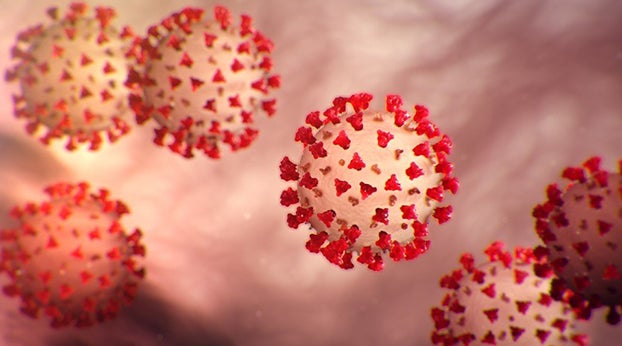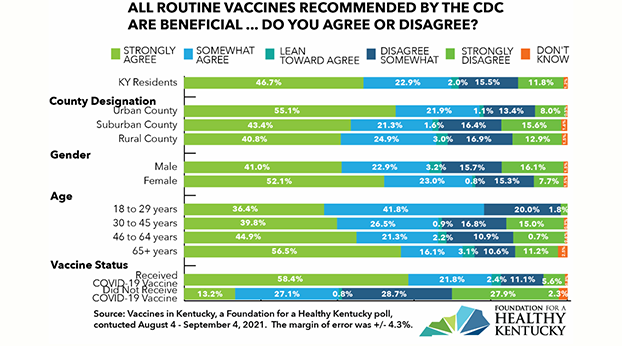Local health department approaches to opioid use prevention, response featured in new NACCHO survey
Published 5:13 pm Monday, August 26, 2019
Washington, D.C. — Much of the day-to-day work of opioid prevention and response falls to local health departments. To better understand this critical role, the National Association of County and City Health Officials (NACCHO) staff conducted a survey and are releasing a new report, “Local Health Department Approaches to Opioid Use Prevention and Response: An Environmental Scan.”
The scan surveyed 198 local health departments in efforts to capture a foundational understanding of the roles local health departments play in opioid use prevention and response efforts in order to inform priorities at the local, state, and national levels. Topics covered in this report include opioid use prevention and response workforce, partnerships, programmatic and clinical services, policy, and data collection and evaluation.
Key Findings
Local health departments engage in a range of opioid use prevention and response activities. While 83% of respondents reported providing community education and outreach, only 50% engaged in naloxone distribution.
Fentanyl and other drug testing protocols were least likely to be available by local health departments at 11%.
Local health departments efforts are well connected in the community. More than 75% of respondents reported working with partner organizations to provide community education, outreach, and linkages to treatment.
Local health department clinical responses are mostly focused on addressing the infectious disease consequences of opioid use. A total of 71% of respondents provide HIV/STI testing. However, other clinical opioid-related services are more likely to be provided by a partner organization than the health department in most of these areas.
Syringe service programs were offered by 21% of local health department respondents. Syringe service policies were also the most reported as being under consideration by localities, which could lead to greater uptake of these programs. In addition, small local health departments have the highest rate of involvement in syringe services policies, compared to large- and medium-sized local health departments.
Local health departments often inform local policies to help address opioid use. More than 70% of respondents reported having the following policies in their jurisdictions: first responder naloxone distribution, increased access to naloxone, Good Samaritan immunity policies, or opioid prescribing guidelines. Syringe services was the policy most reporter as “under consideration,” followed by opioid abuse reporting requirements and syringe decriminalization.
Local health departments around the country provided brief stories from the field outlining their opioid use program successes; these are included in the report. They are:
COLORADO
Comprehensive Data Collection Plan
Tri-County Health Department
KENTUCKY
Cumberland Valley District Health Department, Kentucky
Discarded Needle Program
MAINE
Portland Health Department, Maine
Successful Inter-agency Partnerships
MARYLAND
Dorchester County Health Department, Maryland
Opioid Coordinator and Peer Navigator Program
MASSACHUSETTS
Medford Health Department, Massachusetts, part of the Mystic Valley Public Health Coalition
Comprehensive Stigma Prevention Campaigns
MINNESOTA
Hennepin County Health Department,
Minnesota Advocating for MAT Services in Jails and Correctional Facilities
MISSOURI
Ste. Genevieve County Health Department, Missouri
Innovative Communications Methods: Local Pastoral Alliance
NEVADA
Southern Nevada Health District, Nevada
Syringe Vending Machines
NEW HAMPSHIRE
Nashua Division of Public Health and Community Services, New Hampshire
Safe Stations and Syringe Service Program Evaluation
OHIO
Franklin County Health Department, Ohio
Improving Naloxone Access and Linkages to Care in Jails
Montgomery County Health Department, Ohio
Partnering to Learn from Experienced Coalitions
PENNSYLVANIA
Allegheny County Health Department, Pennsylvania
Developing a Cadre of Diverse Opioid Policies
TENNESSEE
Metro Public Health Department, Tennessee
Tracking Overdose Activity with ODMAP
Sevier County Health Department, Tennessee
Evaluating the Impact of Neonatal Abstinence Syndrome (NAS) Education
WISCONSIN
Real-time Public and Private Overdose Mapping
Public Health Madison and Dane County, Wisconsin
Wauwatosa Health Department, Wisconsin
Comprehensive Social Media Campaign






